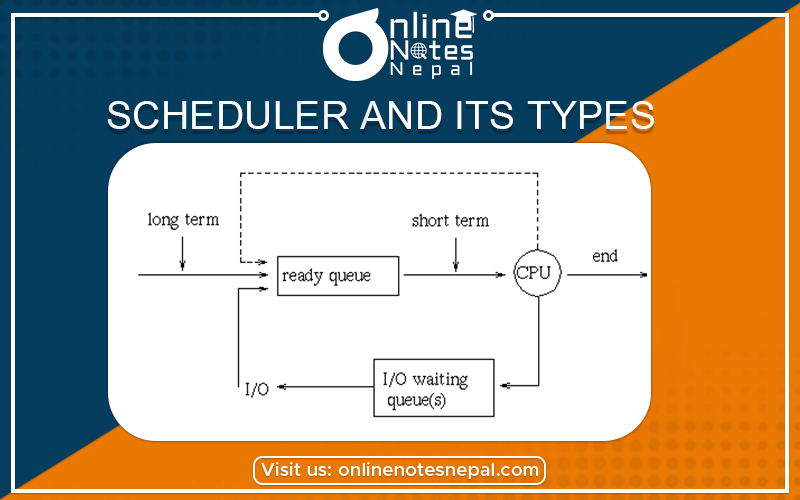Published by: Zaya
Published date: 22 Jun 2021

Schedulers are special system software that handles process scheduling in various ways. Their main task is to select the jobs to be submitted into the system and to decide which process to run.
Schedulers are of three levels:
It is also called a job scheduler. A long-term scheduler determines which programs are admitted to the system for processing. It selects processes from the queue and loads them into memory for execution. Process loads into the memory for CPU scheduling.
The primary objective of the job scheduler is to provide a balanced mix of jobs, such as I/O bound and processor bound. It also controls the degree of multi-programming. If the degree of multi-programming is stable, then the average rate of process creation must be equal to the average
departure rate of processes leaving the system.
It is also called a CPU scheduler. Its main objective is to increase system performance in accordance with the chosen set of criteria. It is the change of ready state to running state of the process. CPU scheduler selects a process among the processes that are ready to execute and
allocates CPU to one of them.
Short-term schedulers, also known as dispatchers, make the decision of which process to execute next. Short-term schedulers are faster than long-term schedulers.
Medium-term scheduling is a part of swapping. It removes the processes from the memory. It reduces the degree of multi-programming. The medium-term scheduler is in charge of handling the swapped out-processes.
A running process may become suspended if it makes an I/O request. A suspended process cannot make any progress towards completion. In this condition, to remove the process from memory and make space for other processes, the suspended process is moved to the secondary storage. This process is called swapping, and the process is said to be swapped out or rolled out. Swapping may be necessary to improve the process mix.
| Long Term Scheduler | Short Term Scheduler | Medium Term Scheduler |
| 1. It is a job scheduler | 1. It is a CPU scheduler | 1. It is a process swapping scheduler |
| 2. Speed is lesser than short term scheduler |
2. Speed is fastest among the other two |
2. Speed is in between both short and long-term scheduler. |
| 3. It controls the degree of multi-programming | 3. It provides lesser control over the degree of multi-programming | 3. It reduces the degree of multi-programming. |
| 4. It is almost absent or minimal in time-sharing system | 4. It is also minimal in the time-sharing system | 4. It is a part of Time-sharing systems. |
| 5. It selects processes from the pool and loads them into memory for execution | 5. It selects those processes which are ready to execute | 5. It can re-introduce the process into memory and execution can be continued. |